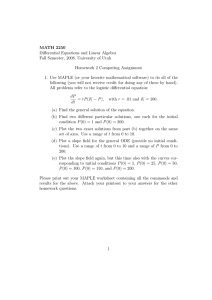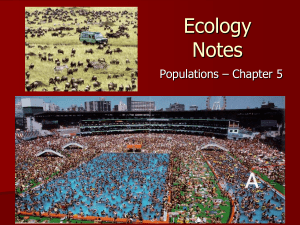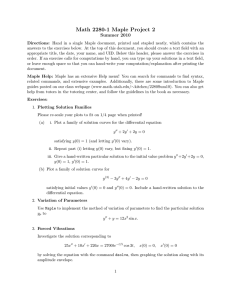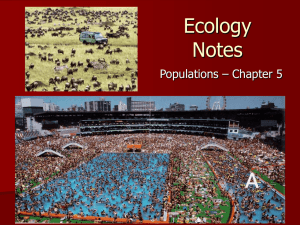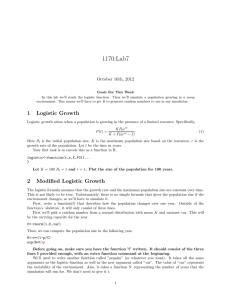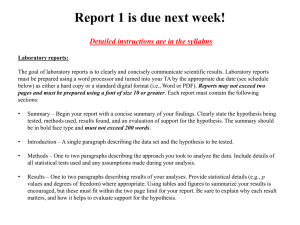Math 2280-2 Maple Project 1, Part 1
advertisement
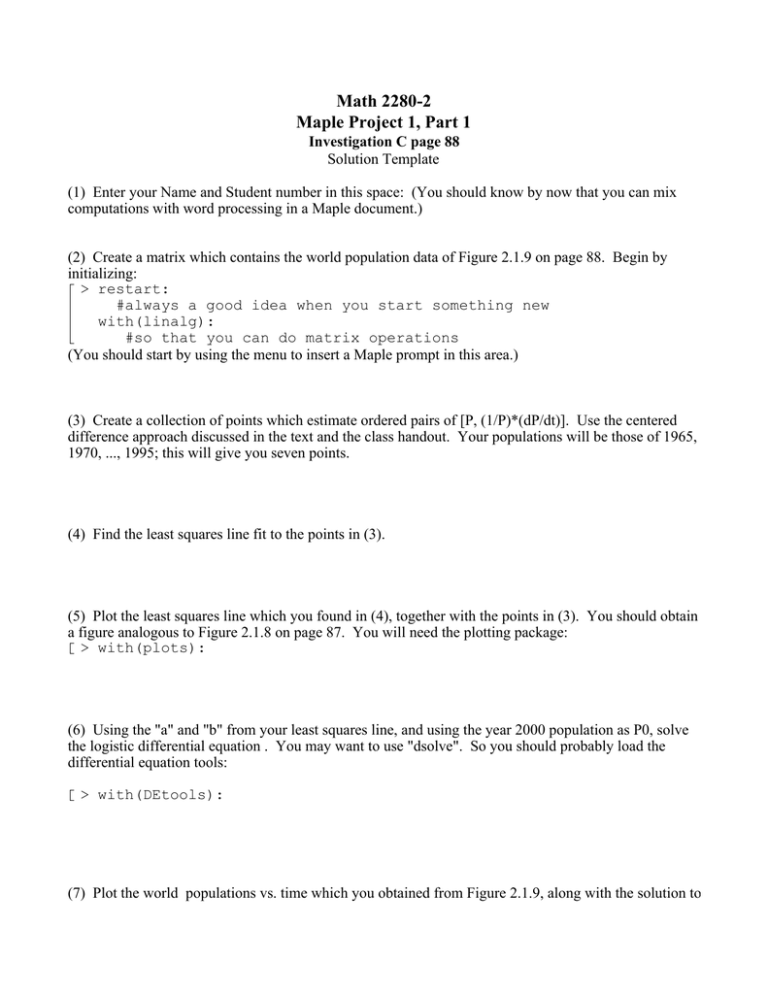
Math 2280-2 Maple Project 1, Part 1 Investigation C page 88 Solution Template (1) Enter your Name and Student number in this space: (You should know by now that you can mix computations with word processing in a Maple document.) (2) Create a matrix which contains the world population data of Figure 2.1.9 on page 88. Begin by initializing: > restart: #always a good idea when you start something new with(linalg): #so that you can do matrix operations (You should start by using the menu to insert a Maple prompt in this area.) (3) Create a collection of points which estimate ordered pairs of [P, (1/P)*(dP/dt)]. Use the centered difference approach discussed in the text and the class handout. Your populations will be those of 1965, 1970, ..., 1995; this will give you seven points. (4) Find the least squares line fit to the points in (3). (5) Plot the least squares line which you found in (4), together with the points in (3). You should obtain a figure analogous to Figure 2.1.8 on page 87. You will need the plotting package: > with(plots): (6) Using the "a" and "b" from your least squares line, and using the year 2000 population as P0, solve the logistic differential equation . You may want to use "dsolve". So you should probably load the differential equation tools: > with(DEtools): (7) Plot the world populations vs. time which you obtained from Figure 2.1.9, along with the solution to the logistic equation in (6), in one display. If you did your work correctly the actual populations should be close to those predicted by your solution (and this is no surprise since you used those populations to pick "best" parameters for the logistic curve). (8) The Population Division of the United Nations predicts a world population of 8.177 billion people in the year 2025. What does your solution to the logistic equation predict? (9) What is the human "carrying capacity" of the earth currently, according to your parameters "a" and "b" ? END
